A Unique Native American Map Everyone Should See
Ellen Lloyd - AncientPages.com - There are currently 574 federally recognized Native American tribes living scattered in different states of the United States.
The number of tribes was much greater before the arrival of the Europeans. Coming into contact with the Europeans had fatal consequences for Native Americans.
This unique map displays all Native American tribes. Credit: Aaron Carapella – Tribal Nations Maps
Native Americans have always lived close to nature, which played an essential role in traditions and religious beliefs.
Native Americans’ Values, Traditions, Customs, And Religious Beliefs Were Insignificant To The White People
“They defined themselves by the land, by the sacred places that bounded and shaped their world. They recognized a unity in their physical and spiritual universes, the union of natural and supernatural. Their origin cycles, oral traditions, and cosmologies connected them with all animate and inanimate beings, past and present.” 1
It was their way of life that every generation adapted. Being Native American means being part of nature. Native Americans “acknowledged the earth’s power and the reciprocal obligation between the hunter and the hunted. They acted to appease the spirits who endowed the world.
Native Americans celebrated the earth’s annual rebirth and offered their first fruits. "These customs were common not only to Native Americans but also Pagans in ancient Europe. People respected Mother Earth more in than past than modern people do today. Native American tribes “used songs and ritual speech to modify their wold while physically altering that landscape with fire and water, brain and brawn. They did not passively adapt, but responded in diverse ways as individuals and groups to refashion environments to meet their cultural and material desires. “ 1
Then, the white men came, and everything changed. Many native Americans who encountered the white people for the first time were friendly and curious. Not all tribes had this attitude, but certainly many. But white men had not come to make new friends. He was there to conquer and get their land.
Suddenly, most Native American tribes realized the newcomers threatened their land, their values, and their traditions. It was no longer o matter of living in harmony with Mother Nature, but a question of survival.
Native Americans have always held nature in high regard. Credit: Adobe Stock - ginettigino
“The pace of change in Native American cultures and environments increased dramatically with Euroamerican contact. Old World pathogones and epidemic diseases, domesticated plants and livestock, the disappearance of native flora and fauna, and changing patterns of native resource use altered the physical and cultural landcape. Nineteents-century removal and reservation policies reduced the continental scope of Indian lands to islands in the stream of American settlement. Reservation lands were largely unwanted or remote environments of little economic value.” 1
In a study, scientists from Northwestern University reported that one-third of Native Americans live in poverty, and native Americans are the poorest ethnic group in the United States. The quality of life in native American reservations is terrible. “Often, three generations of a single family live in one cramped dwelling space. The packed households frequently take in tribe members in need as well. Additionally, most residences lack adequate plumbing, cooking facilities, and air conditioning.“ 2
Today, many Native Americans are cautious when they speak to white people, and who can blame them? History has taught Native Americans to be on guard when they come in contact with people.
The Forgotten Lost Native American Tribes Few Talk About
Many Native American tribes vanished as a result of interaction with newcomers. Today, these tribes are rarely spoken of, but one man decided to keep their memory alive.
Aaron Carapella in Oklahoma who is as he self says, a "mixed-blood Cherokee" has done a remarkable job creating a map of all the lost native American tribes. Carapella, a self-taught mapmaker, spent a decade studying history books and library archives to gain the information he presents today. He spoke to tribal and visited reservations as part of research for his map project, which began as pencil-marked poster boards on his bedroom wall.
Credit: Aaron Carapella – Tribal Nations Maps
Carapella’s map is extraordinary and of great value to history students as it displays the original and commonly known names of Native American tribes. One quick look at the map is enough to see America is the land of Native Americans. This fact cannot and should not be erased from history.
“This map of how our nations looked before contact with outsiders offers our unique perspective as Indigenous Americans. It can be displayed on the walls of our tribal buildings and around our communities to reflect our pride in how we define ourselves, and to give encouragement to tribal members to never forget who we are, or where we belong, Carapella explains on his website, where anyone can buy the map if interested. Carapella's map depicts more than 600 tribes, many now forgotten and lost to history.
We can end this by saying - this is a unique Native American map everyone should see!
Updated on August 7, 2024
Written by - Ellen Lloyd – AncientPages.com
Copyright © AncientPages.com All rights reserved. This material may not be published, broadcast, rewritten or redistributed in whole or part without the express written permission of AncientPages.com
Expand for references- Lewis, David Rich. "Native Americans and the Environment: A Survey of Twentieth-Century Issues." American Indian Quarterly19, no. 3 (1995): 423-50
- Amanda J Godfrey - Native Americans And Life On Reservations, BorgenProject.org
- Aaron Carapella – Tribal Nations Maps
More From Ancient Pages
-
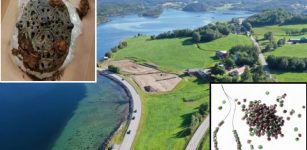 Hundreds Of Highly Unusual Burial Gifts Found In Special Viking Chamber Belonging To Woman In Norway
Archaeology | Nov 26, 2020
Hundreds Of Highly Unusual Burial Gifts Found In Special Viking Chamber Belonging To Woman In Norway
Archaeology | Nov 26, 2020 -
 Dramatic Life Story Of Queen Marie Antoinette Executed By Guillotine During The French Revolution
Featured Stories | Oct 18, 2021
Dramatic Life Story Of Queen Marie Antoinette Executed By Guillotine During The French Revolution
Featured Stories | Oct 18, 2021 -
 Mysterious Ancient Jade Artifact May Offer Evidence Of Trans-Pacific Contact – Did Ancient Sailors From California Visit New Guinea?
Ancient Mysteries | Jan 14, 2018
Mysterious Ancient Jade Artifact May Offer Evidence Of Trans-Pacific Contact – Did Ancient Sailors From California Visit New Guinea?
Ancient Mysteries | Jan 14, 2018 -
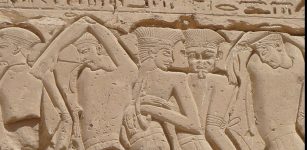 Mysterious Sea People: Many Theories But Their Origin Is still Unknown
Civilizations | Feb 24, 2015
Mysterious Sea People: Many Theories But Their Origin Is still Unknown
Civilizations | Feb 24, 2015 -
 Humans Spread The Black Death – Not Rats – Scientists Say
Archaeology | Feb 7, 2018
Humans Spread The Black Death – Not Rats – Scientists Say
Archaeology | Feb 7, 2018 -
 Underwater Artifacts Shed New Light On Battle Of The Egadi Islands Between Romans And Carthage
Archaeology | Dec 16, 2020
Underwater Artifacts Shed New Light On Battle Of The Egadi Islands Between Romans And Carthage
Archaeology | Dec 16, 2020 -
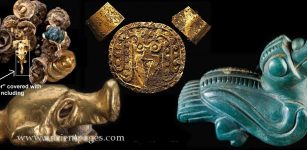 Mysterious Golden Lords Of Panama
Artifacts | Aug 23, 2018
Mysterious Golden Lords Of Panama
Artifacts | Aug 23, 2018 -
 Long-Lost Artifact Re-Discovered In Michigan Offers Evidence Of Overseas Visitors In Pre-Columbian Times
Legends And Mysteries Of North America | Jul 16, 2024
Long-Lost Artifact Re-Discovered In Michigan Offers Evidence Of Overseas Visitors In Pre-Columbian Times
Legends And Mysteries Of North America | Jul 16, 2024 -
 Surprising Discovery Reveals Why Medieval Graves Were Re-Opened – Stealing Was Not The Purpose
Archaeology | May 24, 2017
Surprising Discovery Reveals Why Medieval Graves Were Re-Opened – Stealing Was Not The Purpose
Archaeology | May 24, 2017 -
 Fossil Bones From The Largest Penguin That Ever Lived Unearthed In New Zealand
Fossils | Feb 10, 2023
Fossil Bones From The Largest Penguin That Ever Lived Unearthed In New Zealand
Fossils | Feb 10, 2023 -
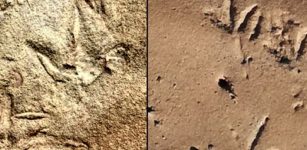 290-Million-Year-Old Bird-Like Footprints Left By Unknown Animals Found In Africa
Fossils | Nov 30, 2023
290-Million-Year-Old Bird-Like Footprints Left By Unknown Animals Found In Africa
Fossils | Nov 30, 2023 -
 Legend Of Ancient Princess Thone Pan Hla Who Is Believed To Haunt Pyay In Myanmar
Featured Stories | Aug 2, 2016
Legend Of Ancient Princess Thone Pan Hla Who Is Believed To Haunt Pyay In Myanmar
Featured Stories | Aug 2, 2016 -
 We Dated A Sacred Aboriginal Women’s Site Used for Birthing Ceremonies And Discovered 7,000 Years Of Tool Making
Featured Stories | Jun 21, 2024
We Dated A Sacred Aboriginal Women’s Site Used for Birthing Ceremonies And Discovered 7,000 Years Of Tool Making
Featured Stories | Jun 21, 2024 -
 Why Was The Magical Sword Azoth Of Paracelsus So Special?
Featured Stories | Dec 24, 2020
Why Was The Magical Sword Azoth Of Paracelsus So Special?
Featured Stories | Dec 24, 2020 -
 6,000-Year-Old Bizarre, Mouthless ‘Alien’ Mask Unearthed In “The Salt Pit” Settlement In Northeast Bulgaria
Archaeology | Nov 20, 2020
6,000-Year-Old Bizarre, Mouthless ‘Alien’ Mask Unearthed In “The Salt Pit” Settlement In Northeast Bulgaria
Archaeology | Nov 20, 2020 -
 Mystery Of The Ancient Bear Bones In The Aleutian Islands, Alaska
Archaeology | Oct 5, 2023
Mystery Of The Ancient Bear Bones In The Aleutian Islands, Alaska
Archaeology | Oct 5, 2023 -
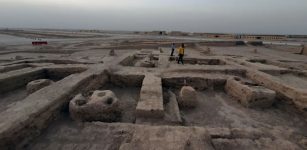 Ancient Parthian City With Hundreds Of Artifacts Unearthed In Iraq
Archaeology | Aug 16, 2022
Ancient Parthian City With Hundreds Of Artifacts Unearthed In Iraq
Archaeology | Aug 16, 2022 -
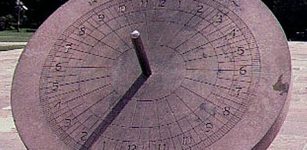 Gnomon: Ancient Time Measuring Instrument Used By Babylonians, Egyptians And Chinese
Ancient Technology | Nov 3, 2016
Gnomon: Ancient Time Measuring Instrument Used By Babylonians, Egyptians And Chinese
Ancient Technology | Nov 3, 2016 -
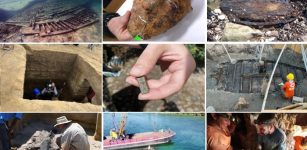 Top 10 Archaeological Discoveries 2023
Archaeology | Dec 27, 2023
Top 10 Archaeological Discoveries 2023
Archaeology | Dec 27, 2023 -
 Innocent-Looking Japanese War Fan – Surprise Weapon Used By The Samurai And Female Ninja
Ancient History Facts | Mar 29, 2018
Innocent-Looking Japanese War Fan – Surprise Weapon Used By The Samurai And Female Ninja
Ancient History Facts | Mar 29, 2018



